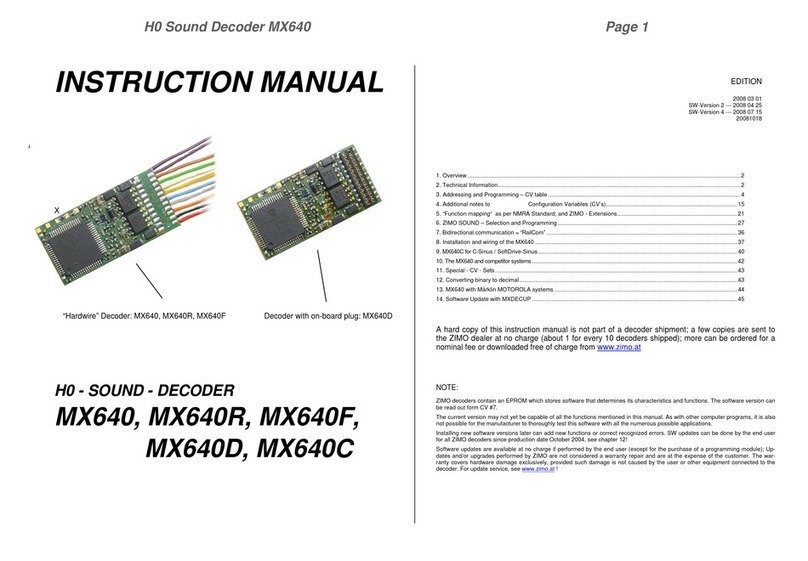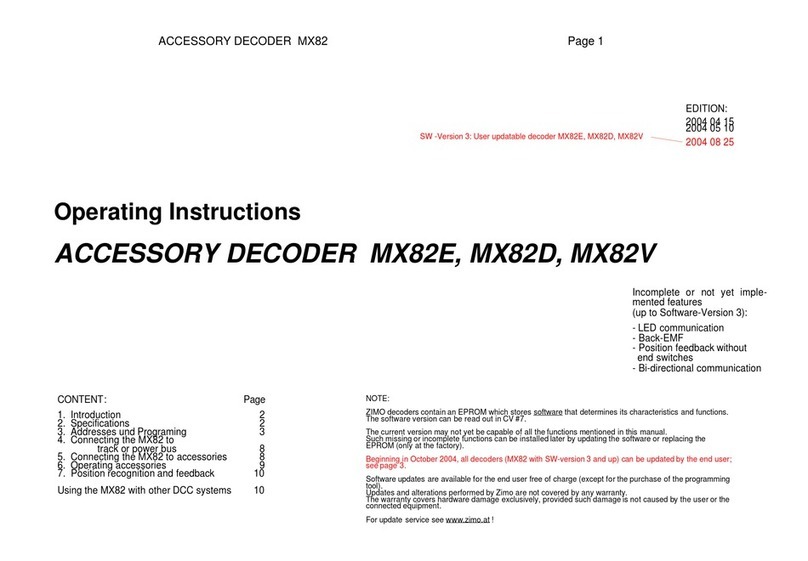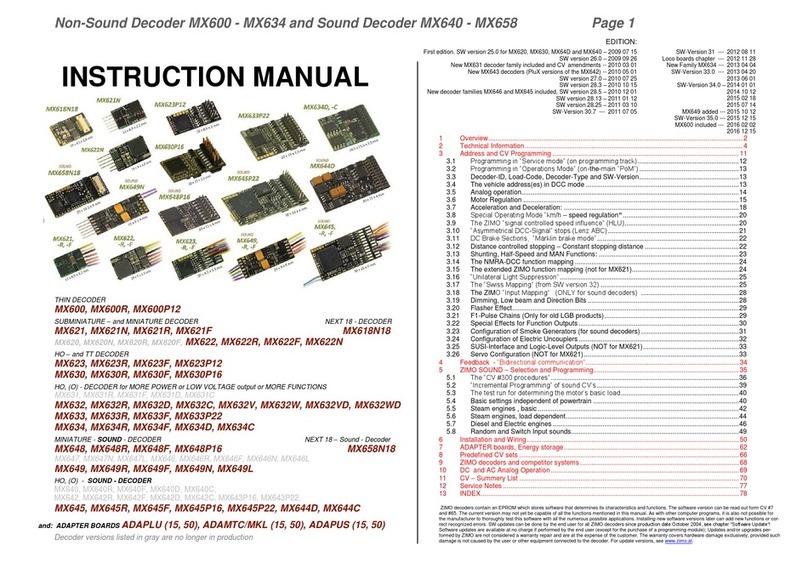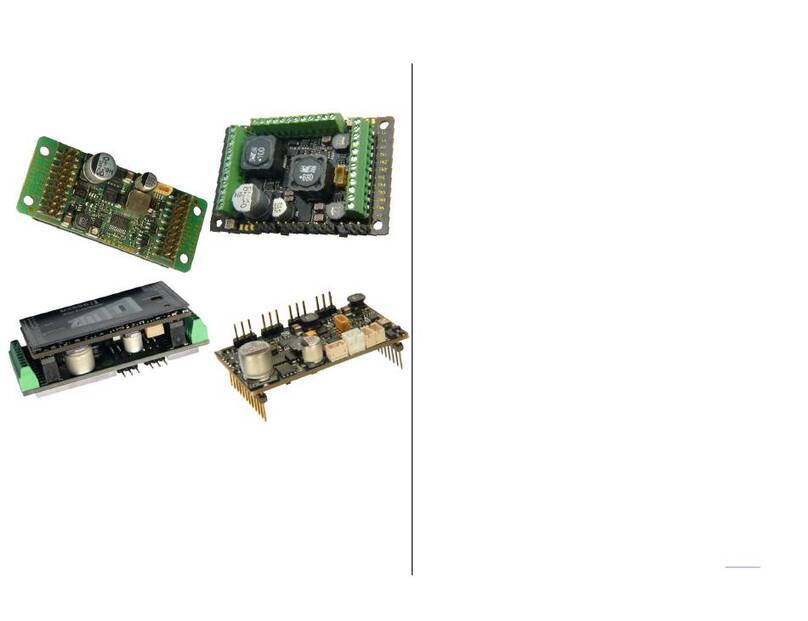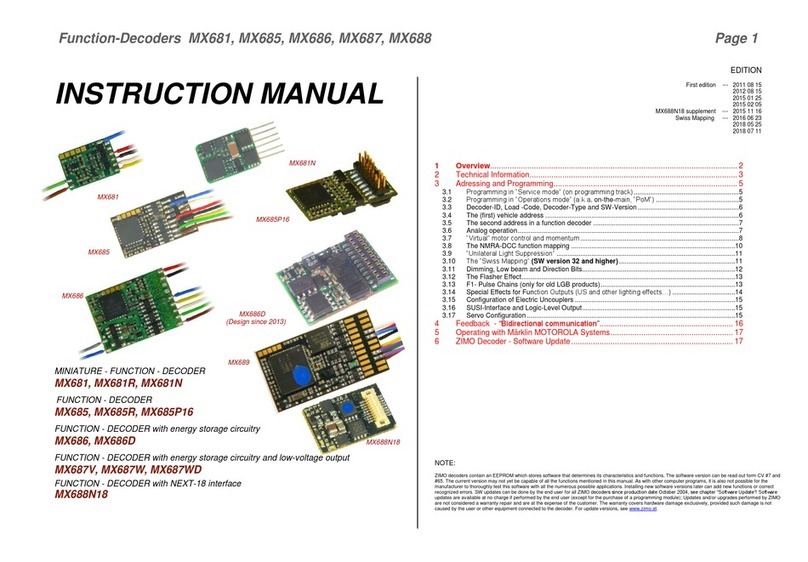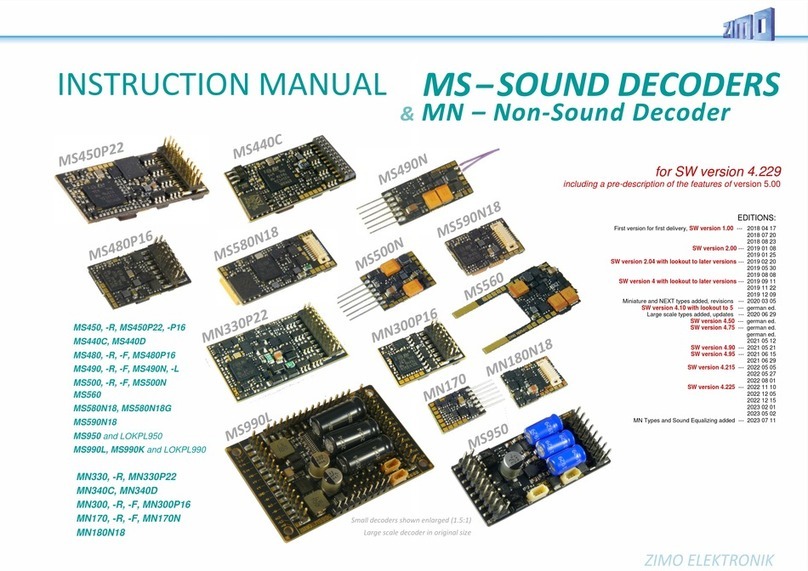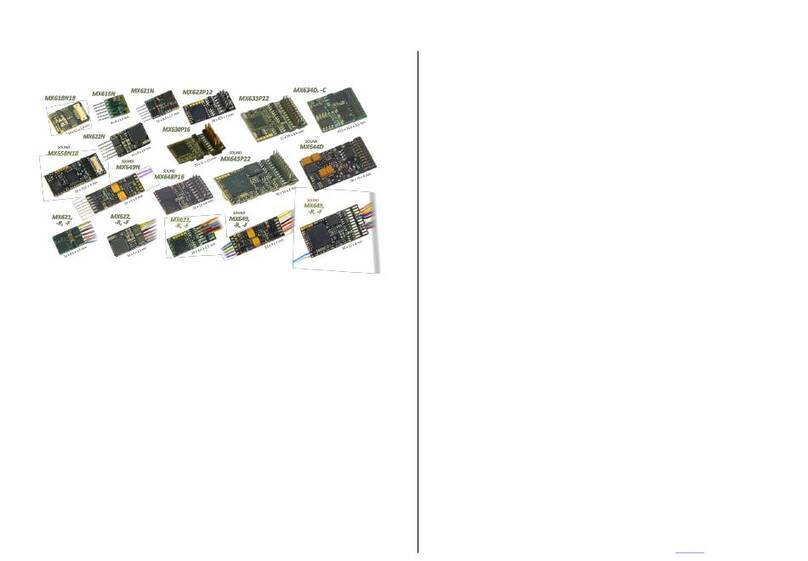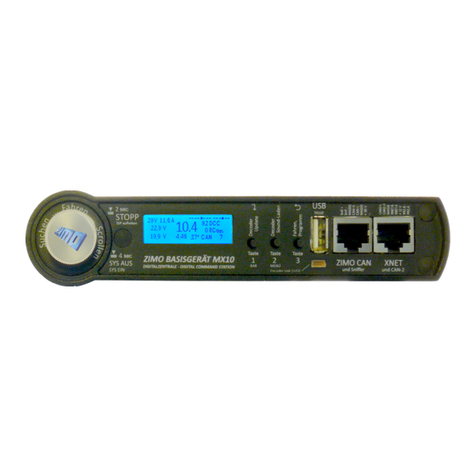
Page 6 MS-SOUND decoders MS440 to MS990
2 Technical Data, schematics, operation with mfx
Technical data for all MS sound decoders:
Allowable track voltage H0 and large scale decoders .................................................... 7 V - 35 V
Miniature- and Next-Decoders ................................................. 7 V - 24 V
Decoder together with StayAlive controller STACO1 ............. 12 V - 18 V
(Miniature decoders can withstand a track voltage higher than 30 V only for a short time (< 1 sec) – e.g.
for Märklin-switching impulse)
Operating temperature .................................................................................................. - 20 to 80 °C
Sound sample memory .......................................................... 128 Mbit (= 360 sec at 16 bit / 22kHz
up to 1440 sec with 8 bit / 11 kHz) *)
Resolution of the sound samples and the play back quality ............................................. 8 or 16 bit
Sample rate of the sound samples and the playback ................................................ 11, 22, 44 kHz
Number of independent sound channels ....................................................................................... 16
*) those playback times are all “theoretical”; in praxis, 5 to 20% of the memory are not available, because they
are reserved for organization, descriptions, GUI-info, sounds to load later, etc.
This calculation is based on a maximum sample rate of 22 kHz, because 44 kHz does not provide real im-
provment to quality.
Data on the STACO1 StayAlive controller (in conjunction with miniature decoder)
Permissible range of the track voltage when STACO1 is in use ..................................... 12 V - 18 V
Charging current............ depending on the number of mini gold caps - 2 or 3 - a.o..: 30 - 60 mA
Time to charge from 0 to 100% ................................................................................. approx.. 5 sec
Discharge current (for consumption by motor, lights, sound) ...................................... max. 500 mA
Discharge time ................................................................ depending on consumption: 0.5 to 5 sec
Technical data for all MS sound decoders:
See previous chapter “Overview...”.
The decoder type can be read out in CV #250 if needed:
1 = MS500 3 = MS490 5 = MS580 7 = MS990 9 = MS950
2 = MS480 4 = MS440 6 = MS450 8 = MS590 10 = MS560
Software Update:
You need a device that is able to perform updates: ZIMO MXULF/A (decoder updating and sound
loading device), ZIMO central command station MX10, or Roco digital central Z21. The new SW
version is downloaded from www.zimo.at, loaded into a flash drive or sent to the updating device via
USB-connection to a computer and ZSP to an updating device, which then executes the actual up-
date via the track input of the decoder.
This is (generally) also the way a sound project is loaded into a ZIMO decoder.
In general, both UPGRADE (the "normal" process, update to newer version) and DOWNGRADE (ex-
ceptional cases, update to older version) are possible; BUT: Downgrade of decoders with SW version
from 4.200 to SW versions older than 4.200 is NOT possible.
See chapter "Software update and sound loading with MXULFA" in this operating manual and
MXULF(A) operating manual; especially downgrade limit for SW version 4.200!
Overload and thermal protection:
The motor and function outputs of ZIMO decoders are designed with lots of reserve capacities and
are additionally protected against excessive current draw and short circuits. Cut-outs are encoun-
tered if the decoder is overloaded.
Even tough the decoder is well protected; it is not indestructible. Please pay attention to the following:
Wrong decoder contact: if, for example, the motor leads have contact to track power or an overload connection
between the motor brushes and rail pick-ups, this is not always recognized by the overload protection circuit and
could lead to damage of the motor power amplifier or even a total destruction of the decoder.
Unfit or defective motors: e.g. coil or commutator shorts are not always recognized by their high current con-
sumption, because these are often just short current spikes. So, they can lead to decoder damage including dam-
age to power amplifiers due to long-term exposure.
The power amplifiers of loco decoders (motor as well as function outputs) are not only at risk of overcurrent but also
voltage spikes, which are generated by motors and other inductive consumers. Depending on track voltage,
such spikes can reach several hundred volts and are absorbed by special protection circuits inside the decoder.
This is why the running voltage shall not be too high, i.e. not higher than intended by the corresponding vehicle.
ZIMO decoders are equipped with temperature sensors to measure their own operating temperature. Power to the
motor will be turned off once that temperature exceeds 100°C. The headlights start flashing rapidly, at about 5 Hz,
to make this state visible to the operator. Motor control will resume automatically after a drop in temperature of
about 20°C (i.e. to about 80°C), typically in about 30 seconds.
Overcurrent shutdowns due to motor interference:
Some locomotives from PIKO and other manufacturers have such large capacitors connected in par-
allel to the motor output as part of the motor interference suppression, which strongly impede operation,
or it even comes to overcurrent shutdown.
REMEDY: The "harmful" capacitor on the PIKO locomotive board is usually marked with "C4", this
must be removed. To do this, you usually have to remove the locomotive board, because the capaci-
tor is populated on the bottom side.













